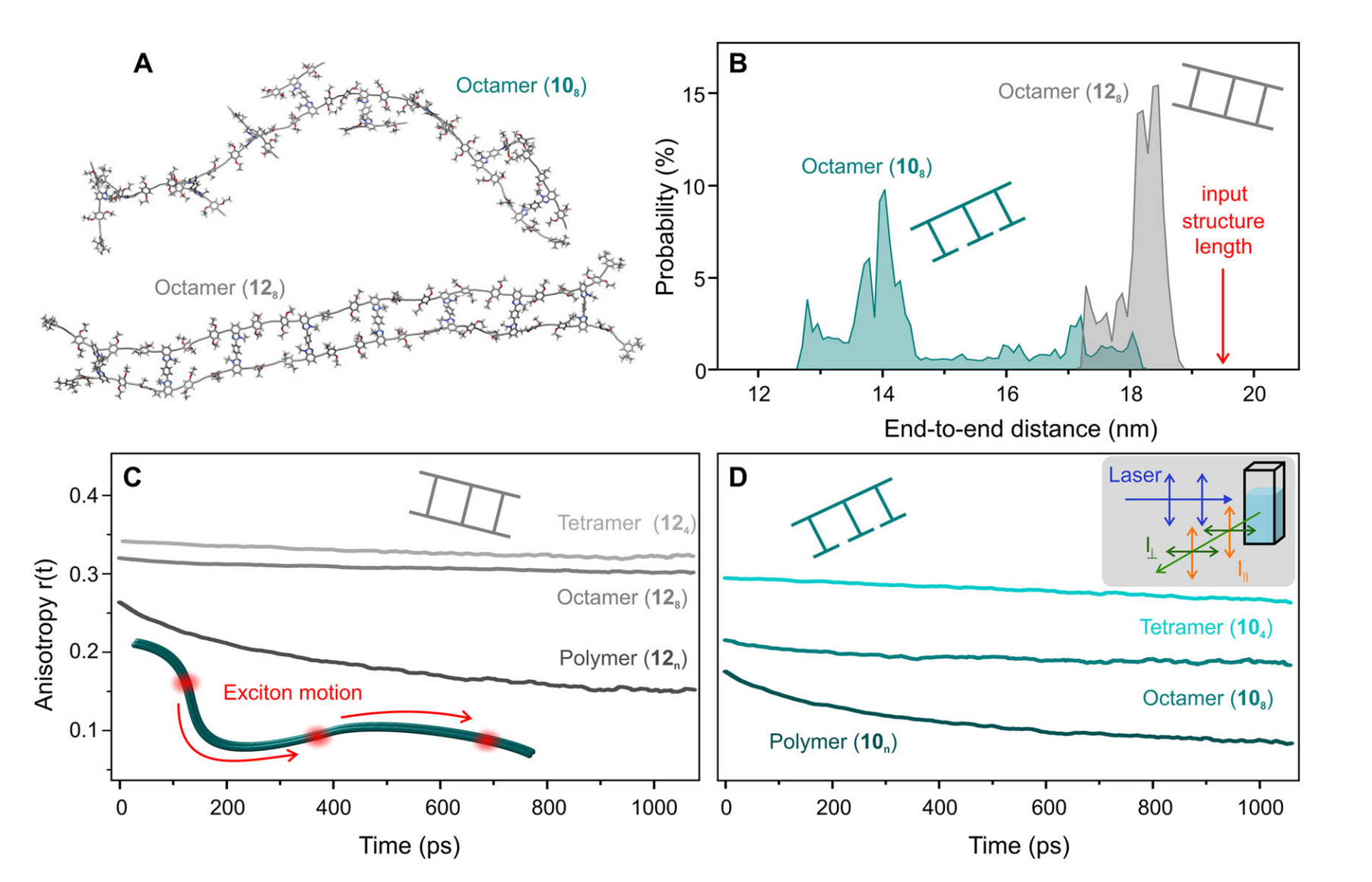Inspired by one of humankind’s oldest and most useful innovations, the common ladder, Germany-based researchers at the University of Bonn and Regensburg have developed a novel method for transferring energy across a highly conjugated ladder of polymers.
 Image Credit: Meißner, S., et al., (2021) Nanoscale π-conjugated ladders. Nature Communications, [online] 12(1). Available at: https://doi.org/10.1038/s41467-021-26688-9
Image Credit: Meißner, S., et al., (2021) Nanoscale π-conjugated ladders. Nature Communications, [online] 12(1). Available at: https://doi.org/10.1038/s41467-021-26688-9
Nature widely exploits ladder formation, often supramolecular as in DNA or collagen, for information storage or to enhance structural rigidity.
Professor Sigurd Höger of the University of Bonn
Ladders come in all sorts of shapes and sizes and are made of a wide range of materials, including steel, wood, plastic and rope. Thus, flexibility typically varies depending on the material used, but no matter how flexible when in use, ladders must exhibit strong and rigid conformity.
Since rigidity was one of the challenges the researchers sought to address, it was key to consider how well the polymers performed when grouped together. By introducing a flexible concept of rigidification where two rigid-rod polymer chains are relentlessly covalently associated along their contour by rigid molecular connectors, the team was able to produce almost perfect ladder-like structures.
Even though the molecular ladder is just one nanometer (a millionth of a millimeter) high, two nanometers wide and one hundred nanometers long, it demonstrated excellent rigidity. Nanostructures are garnering great attention due to their materials' potential and unique properties, and the Germany-based team was able to corroborate such claims.
Reimaging the Ladder
Höger and his team envisioned a molecular structure arranged in a ladder-like shape for a long time. While a far cry from conventional ladders, what they sought to image was predicated on an arrangement of “conjugated polymers,” where double and single bonds alternate between the carbon atoms. In effect, they form the guiding rails that hold the rungs in place on an ordinary ladder.
Initially, the team devised a compound that was made up of single polymer chains and attached to polymerizable groups – these structures were much more flexible and therefore could not guarantee structural integrity.
The team was aiming to prevent the polymer from collapsing and therefore be suitable for use in demanding applications for the transfer of energy. The team carefully evaluated the ladder structures using scanning tunneling microscopy (STM), which confirmed the shape and rigidity of unparalleled dimensions.
The molecules are characterized by unprecedented excitonic mobility, giving rise to excitonic interactions on length scales exceeding 100 nm. Such interactions lead to deterministic single-photon emission from these giant rigid macromolecules.
Professor Sigurd Höger of the University of Bonn
The team also tested the polymer structures in solution at room temperature and were reassured to see that the ladder retained its rigidity which facilitates the transfer of energy in a wider range of applications.
Potential Applications
What this means is that the polymer structures could be fundamental in the development of advanced electronics, including optical networks, sensors and circuits. Additionally, as the polymers can conduct electrical currents in principle and generate small amounts of energy when exposed to light, they could be used to manufacture state-of-the-art OLED (organic light-emitting diodes) displays or even in solar cells.
Having demonstrated a dynamic synthetic strategy for fabricating highly conjugated ladder polymers of unparalleled dimensions, the team has presented an extraordinary material with the potential for energy conversion in optoelectronic devices.
Moreover, this development also builds upon and goes beyond the work of the chemist Friedrich August Kekulé, later professor at the University of Bonn. Kekulé had a dream of a snake consuming its own tail to explain the arrangement of the compound benzene.
The researchers from the Kekulé Institute and the Mulliken Center for Theoretical Chemistry at the University of Bonn, together with a team from the Institute of Experimental and Applied Physics at the University of Regensburg, have successfully turned Kekulé’s snake into a ladder and thus produced a nanostructure with exceptional rigidity.
References and Further Reading
Meißner, S., et al., (2021) Nanoscale π-conjugated ladders. Nature Communications, [online] 12(1). Available at: https://doi.org/10.1038/s41467-021-26688-9
Disclaimer: The views expressed here are those of the author expressed in their private capacity and do not necessarily represent the views of AZoM.com Limited T/A AZoNetwork the owner and operator of this website. This disclaimer forms part of the Terms and conditions of use of this website.